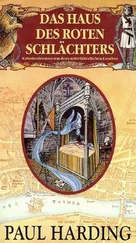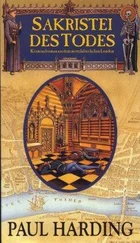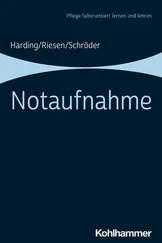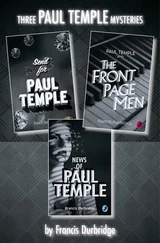George most often visited with Edward Billings, the manager of the Enon branch of the Salem Five bank. Edward stood a foot and a half higher than George, like a fleshy Olympian pear trussed up in a three-piece suit. Even his head seemed tall and elongated. It was topped by a bald dome, which reflected the ceiling lights of the bank so clearly that it seemed lit from within. The band of hair circling the circumference of his head was meticulously dyed, and when he did not have his hands pressed to each other at the tips of his fingers, as if in a kind of prayer or exhortation, he smoothed it down along the back of his skull with the end of a middle finger. The two looked like a vaudeville act one Tuesday morning in January, standing next to each other behind Edward's desk at the back of the bank, looking at the especially large Vienna regulator clock hung on the wall. George maintained the clock for Edward (at the bank's expense, of course), and the two contemplated the motionless pendulum as they spoke.
Damn thing just stopped, Mr. Crosby, Edward said.
George said, These things are tricky bastards. George saw, with his years of experience, that the clock had been merely brushed off level by the enormous banker as he had inserted or extracted himself behind his desk, and that the pendulum would therefore run down and stop ten minutes after whenever it was started. Edward's phone rang and he excused himself to answer it. He spoke with his head bowed and his back turned to George. As he told a Mr. White on the other end of the line that, yes, he'd have those summaries by the end of the week, George righted the clock on the hook from which it hung. Edward turned back toward George and held up an index finger and nodded to him, saying into the phone, Yes, yes, that's right, Friday at the latest, Saturday morning at the very latest, if the Lynn branch can't hop to it. George nodded back and mouthed, I have to go out to the car.
George brought a stepladder and a tackle box full of tools back into the bank. He set the ladder up in front of the clock, opened its large glass door, mounted the ladder, and peered up into the clock. He grunted and swore and dismounted the ladder to change tools three times, all while thinking of his children and his grandchildren, their winter clothes and their new roofs, their failing transmissions and foundering marriages, their fifth years at private colleges. At the end of half an hour, he finally said, Aha, I got you, you little son of a- And he climbed down the ladder, dabbing his forehead with a handkerchief. Edward filled out a yellow form and drew three one-hundred-dollar bills from one of the tellers' drawers, which George promptly handed back to the teller, a middle-aged woman named Eddie, who had worked at the bank since it had opened in 1961, and told her, just put these in that little gray box I have out back, my dear, along with all the others. How did I ever know you were going to say that, Mr. Crosby? she said, laughing and making her chewing gum pop. She took the bills and licked her thumb and snapped each one twice, counting, One two three, One two three, and buzzed herself into the bank's vault. At that moment, the bank, quiet and ordered, bland music quietly burbling overhead from the speakers in the ceiling, seemed to George bathed in a golden light.
The wallpaper in George's basement workroom had a pattern of larch branches on a dunn-colored background. Clocks in various states of repair and disrepair hung on wall, some ticking, some not, some in their cases, some no more than naked brass works fitted with their pairs of hands. Cuckoos and Vienna regulators and schoolhouse and old railroad station clocks hung at different heights. There were often twenty-five or thirty clocks on the wall. Some of them were clocks he wanted to sell. None was marked. The closet to the left of his desk was made from raw pine planks and took up the space beneath the stairway. Between the pine planks and the arboreal wallpaper and the wood of the clocks, and the fact that the only windows were two small dry wells high in the wall near the ceiling, one felt one was in some odd, ticking bower. George sat at his desk at all hours of the day, looking down through his bifocals and often through one or two lenses of a clip-on set of jeweler's loops down into the brass guts of clocks, pushing and pulling at arbors and gears and ratchets, humming non-existent melodies, which evaporated as he unconsciously composed them. In this setting, he drove numerous fidgety grandchildren to near madness, insisting that they sit in a hard chair and watch him hum and poke around to no apparent effect. This is the thing to get into, boy. I tell you, this is how you can make some bucks. There was little to do but try to pick out recognizable bits of songs from his humming, which none of the children could do, and listen to the way that the tickings of the different clocks, which not only lined the walls but were also crowded onto several folding card tables, an old cot, and the shelves of a built-in bookcase, fell into and out of beat with one another. On rare occasions, every clock in the room seemed to tick at the same time. By the next tock, however, they all began to drift away from one another again and George's hapless victim would nearly weep at the prospect of having to sit still and listen again for the confluence. The only light in the room was one small wall lamp fitted with a forty-watt bulb and George's flu orescent jeweler's lamp, which was clamped to the desktop and could be pulled into almost any conceivable angle in order to illuminate almost any depths the works of a clock might present. This light provided the only other source of diversion for the child condemned to witness the mysterious, agonizing, glacial, undramatic doings of antique clock repair: watching the dust float. The jeweler's lamp brilliantly lit the dust in the air near whatever clock was being worked on. The rest of the room was dark with clocks and the evergreen wallpaper and so provided a perfect contrast to the front-lit specks of dust that floated down into or across the lamp's halo. The child imagined the flecks were miniaturized ships exploring inner space: The giant is fixing the time machine. We can only hope he doesn't sneeze or make any sudden moves and create a vortex that will send us hopelessly off course. The ship is made only of lamb's wool and dander!
How to Make a Bird's Nest: Take a wafer of tinker's tin. With heavy scissors, cut four triangles. The triangles shall be small, no taller or wider than half an inch, preferably smaller, if possible. Punch holes near the two angles at the base of the triangle, using a small hammer and the slimmest nails or brads possible. A large, sturdy sewing needle is even better, as it will yield a finer hole. Fold each triangle along an imaginary line extending from the top point to the middle of the base. The angle of the fold should be as close to ninety degrees as possible, using only the naked eye (as the utility of the tool does not depend on exact mathematical measurement). Thread each of the pieces with a length of fishing line or kitchen string or strong sewing thread. Now, patience is required; place in turn each piece of shaped tin over the nails of the forefinger and thumb of each hand so that the end point of each piece extends approximately one-quarter of one inch beyond the fingertip. Fasten each piece to the finger by tightly tying the thread around the finger at the first joint (but not so tightly that circulation is lost). This may take practice. Join the thumb and forefinger at their pads. By rolling them together forward and back, the two folded triangles should variously meet and separate; these are your beaks. It is with these that you will pick up grass and twigs and tinsel and stray bits of string and weave them together in the branches of a chosen tree or bush or thicket, depending on the species whose nest you wish to undertake. (This in itself requires preparation and it is suggested that as many examples as possible of the desired type of nest be studied before attempting one's own version. Even more desirable is to spend as many a spring afternoon as manageable watching the birds themselves weave their homes; such observation will help immensely in learning the particular stitch required.) Keep in mind, though, that the materials for the nest must be col lected and woven strand by strand. Birds do not gather their lumber, so to speak, all at once, but, rather, search out each plank and shingle one at a time. Such a birdy method may at first seem absurd to the forwardthinking nest maker, but soon it will be found that the pleasures of the project are not derived from efficiency. (Another desired eventuality is that as one becomes more and more dexterous weaving nests, one will begin to do so with only one beak, as it were. And here, then, too, is another temptation to overcome-keeping one's free hand behind one's back and refraining from giving the birds a helping human hand!)
Читать дальше












